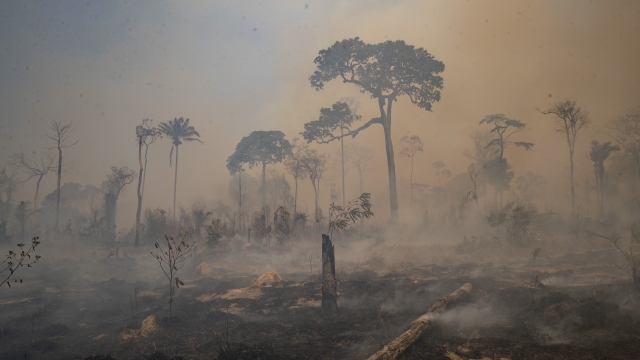The world is creeping closer to the warming threshold international agreements are trying to prevent, with nearly a 50-50 chance that Earth will temporarily hit that temperature mark within the next five years, teams of meteorologists across the globe predicted.
With human-made climate change continuing, there’s a 48% chance that the globe will reach a yearly average of 1.5 degrees Celsius (2.7 degrees Fahrenheit) above pre-industrial levels of the late 1800s at least once between now and 2026, a bright red signal in climate change negotiations and science, a team of 11 different forecast centers predicted for the World Meteorological Organization late Monday.
The odds are inching up along with the thermometer. Last year, the same forecasters put the odds at closer to 40% and a decade ago it was only 10%.
The team, coordinated by the United Kingdom’s Meteorological Office, in their five-year general outlook said there is a 93% chance that the world will set a record for hottest year by the end of 2026. They also said there's a 93% chance that the five years from 2022 to 2026 will be the hottest on record. Forecasters also predict the devastating fire-prone megadrought in the U.S. Southwest will keep going.
These forecasts are big picture global and regional climate predictions on a yearly and seasonal time scale based on long term averages and state of the art computer simulations. They are different than increasingly accurate weather forecasts that predict how hot or wet a certain day will be in specific places.
But even if the world hits that mark of 1.5 degrees Celsius above pre-industrial times — the globe has already warmed about 1.1 degrees Celsius (2 degrees Fahrenheit) since the late 1800s — that’s not quite the same as the global threshold first set by international negotiators in the 2015 Paris agreement. In 2018, a major United Nations science report predicted dramatic and dangerous effects on people and the world if warming exceeds 1.5 degrees Celsius.
The prediction makes sense given how warm the world already is and an additional tenth of a degree Celsius (nearly two-tenths of a degree Fahrenheit) is expected because of human-caused climate change in the next five years, said climate scientist Zeke Hausfather of the tech company Stripe and Berkeley Earth, who wasn’t part of the forecast teams. Add to that the likelihood of a strong El Niño— the natural periodic warming of parts of the Pacific that alter world weather — which could toss another couple tenths of a degree on top temporarily and the world gets to 1.5 degrees Celsius.
The world is in the second straight year of a La Niña, the opposite of El Niño, which has a slight global cooling effect but isn’t enough to counter the overall warming of heat-trapping gases spewed by the burning of coal, oil and natural gas, scientists said. The five-year forecast says that La Niña is likely to end late this year or in 2023.
Newsy is the nation’s only free 24/7 national news network. You can find Newsy using your TV’s digital antenna or stream for free. See all the ways you can watch Newsy here.




